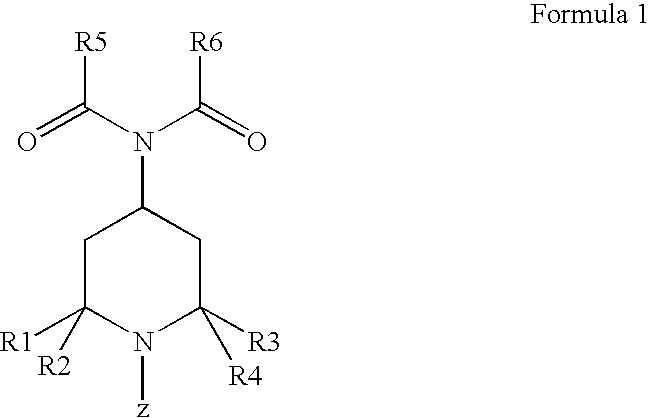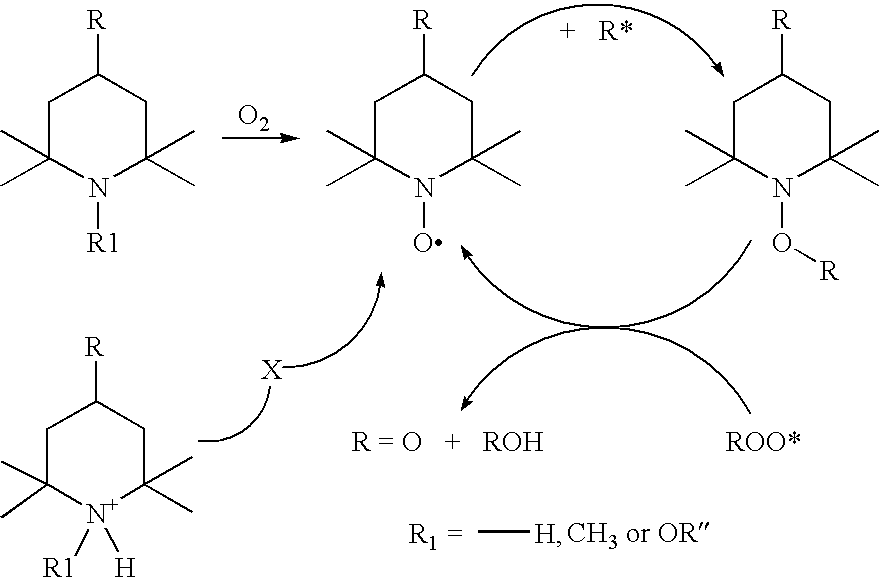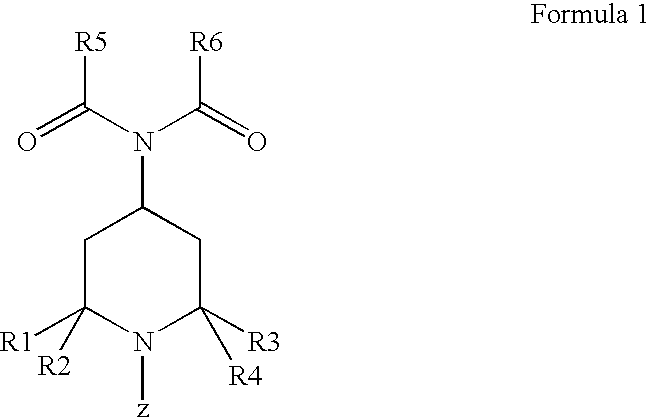Dermocosmetic Preparations
a technology of cosmetic preparations and skin, applied in the field of cosmetic preparations, can solve the problems of free radical damage to collagen and elastin, adversely affecting the fatty substances, damage to the cells of the skin itself, etc., and achieve the effect of improving the regeneration of the skin and reducing the actual damag
- Summary
- Abstract
- Description
- Claims
- Application Information
AI Technical Summary
Benefits of technology
Problems solved by technology
Method used
Image
Examples
experimental examples
[0355]The following examples are disclosed in order to illustrate preferred embodiments of the present inventions These examples are not to be considered as definitive or as limiting the subject matter of the invention.
[0356]The following abbreviations are used in the experimental description:
[0357](2-amino-2-methyl-propanol) AMP, (degrees Celsius) C°, (ethylenediamintetraacetic acid) EDTA, (hindered amine stabilizer) MS, (1,1-difluoroethane) HFC 152, (International Nomenclature of Cosmetic Ingredients) INCI, (milliliter) ml, (minutes) min.,(oil / water) O / W, (polyethylene glycol) PEG-25, (paraaminobenzoic acid) PABA, (parts per million) ppm, (quantum satis) q.s, (vinylpyrrolidones) VP, (water / oil) W / O, (active substance) AS, (polyvinylpyrrolidones) PVP.
example 1
Oxidation Test Squalene Test
[0358]3 ml of a 2% strength solution of the azo initiator V65 (from Wako) are introduced together with 2500 ppm of test substance (based on the squalene solution) into 12×100 ml Fiolax test tubes and thoroughly mixed using a laboratory shaker. The samples are then stored open in a through-circulation drying oven for 30 days at 40° C. At intervals of 7 days, the squalene content of the samples is determined by means of the Raman spectrum and chemometric evaluation. The datapoints are documented in an XY graph and the efficiency of the test substance is determined from the slope of the decomposition curves in comparison with a reference sample without test substance. The slope of the reference sample divided by the slope of the test substance sample gives the factor Q_Raman.
Structure / tradenameQramanpKaWithout stabilizer1 Tocopherol1.4Ascorbic acid1.2Rutin1.2N—H, N-Alkyl compounds2.41.41.39.82)2.22.48.51)Tinuvin 2921.76.54)idealized structural formula for T...
example 2
Solubility of Various HAS Compounds in Miglyol 812®
[0360]Experimental procedure: The respective MS compound was introduced gradually in small portions into 10 g of Miglyol and in each case stirred at room temperature until it had completely dissolved.
1)Uvinul ® 5050→min. 36%2)Compound 1 (cf. table)→min. 33%3)Uvinul ® 4050H→insoluble4)Uvinul ® 4049→insoluble5)Tinuvin ® 770→4.7%6)2-Dodecyl-N-(2,2,6,6-tetramethyl-4-→min. 50%piperidinyl)succinimide
[0361]The results of this experiment show that the sterically hindered amines according to the invention have good solubility in cosmetic oils. Furthermore, these experiments demonstrate that the comparative substances are virtually insoluble.
PUM
| Property | Measurement | Unit |
|---|---|---|
| Percent by mass | aaaaa | aaaaa |
| Temperature | aaaaa | aaaaa |
| Fraction | aaaaa | aaaaa |
Abstract
Description
Claims
Application Information
 Login to View More
Login to View More - R&D
- Intellectual Property
- Life Sciences
- Materials
- Tech Scout
- Unparalleled Data Quality
- Higher Quality Content
- 60% Fewer Hallucinations
Browse by: Latest US Patents, China's latest patents, Technical Efficacy Thesaurus, Application Domain, Technology Topic, Popular Technical Reports.
© 2025 PatSnap. All rights reserved.Legal|Privacy policy|Modern Slavery Act Transparency Statement|Sitemap|About US| Contact US: help@patsnap.com



